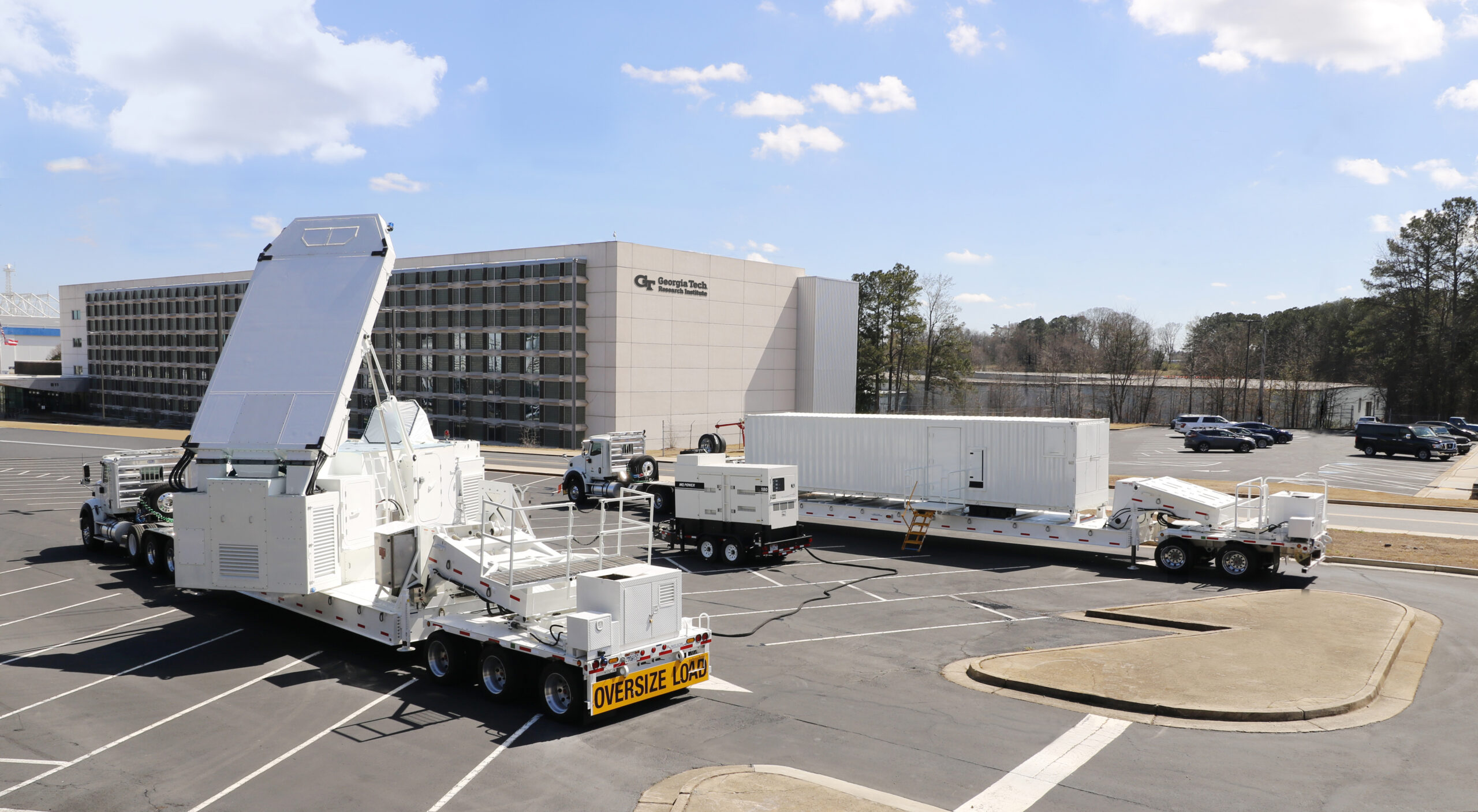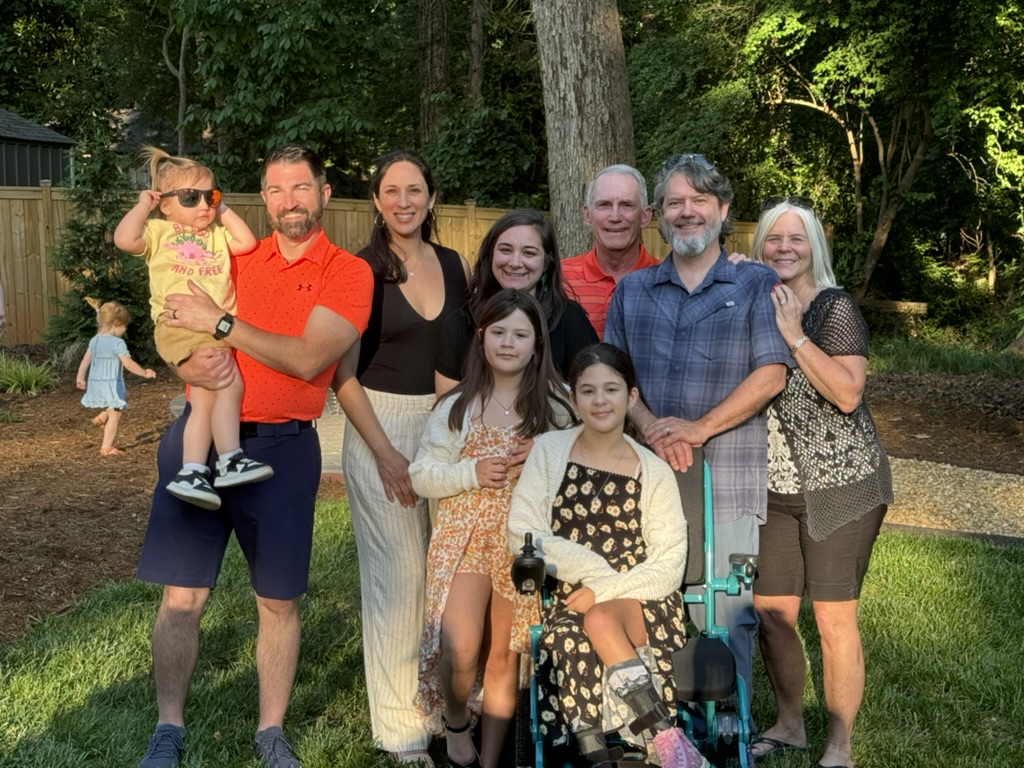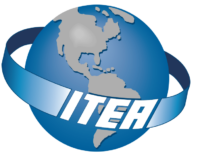JUNE 2024 I Volume 45, Issue 2
A Bourbon with Rusty: A Conversation with Russell L. Roberts
JUNE 2024
Volume 45 I Issue 2
IN THIS JOURNAL:
- Issue at a Glance
- Chairman’s Message
Conversations with Experts
- A T&E Career of Learning by Doing: A Conversation with Mr. Edward R Greer
- A Bourbon with Rusty: A Conversation with Russell L. Roberts
Values in T&E
- My T&E Career, The First 25 Years
- The Architecture Analogy in Test Planning: An example of the T&E value of 'Well-Planned'
- Values in Operational Testing
Technical Articles
- Digital Test and Evaluation: Validation of System Models as a Key Enabler
- Statistical Review of the Cyber Test Process
- The Robust Classical MTBF Test
Workforce of the Future
- Deep Learning for Autonomous Vehicles
- The K-D Tree as an Acceleration Structure in Dynamic, Three-Dimensional Ionospheric Modeling
- Optimization Engine to Enable Edge Deployment of Deep Learning Models
News
- Association News
- Chapter News
- Corporate Member News

A Bourbon with Rusty: A Conversation with Russell L. Roberts
Mr. Roberts is Director of the Aerospace, Transportation and Advanced Systems
Laboratory at the Georgia Tech Research Institute and retired U.S. Army Signal officer.
Interviewed by J. Michael Barton, Ph.D., Parsons Corporation
Q: How did you choose the Army for a career instead of industry, academia, or government service?
A: My father was a career Army officer, which introduced me to what the Army is and what a career would look like. But at first an Army career did not appeal to me. I wanted to go to the University of Florida and study Electrical Engineering (EE). However, during my junior year in High School, I was afforded the opportunity to interview for a competitive nomination to go to West Point. In fact, it was a series of interviews and then a series of tests, both mentally and physically. After that first interview I got excited about the possibility of attending West Point and got very serious about the competition. I had reasonably good grades, and I was on the wrestling team, so could ace any physical test. After a few months, I “won” the nomination from our local Congressman, and the rest is history!
Q: After graduating from West Point as an electrical engineer you were active duty for 10 years, including teaching at the Academy. How did active-duty assignments prepare you for a career in test and evaluation (T&E)?
A: My first assignment was at Fort Gordon, GA as a Platoon Leader in the 67th Signal Battalion, a Corps area tactical signal unit. There I was able to hone my communications skills while leading a platoon. The Army then sent me to the 1st Signal Battalion in Kaiserslautern, Germany first as a Platoon Leader and then a Company Commander. Interestingly, my company was the active-duty unit which tested (Operational Test) the Tactical Automated Switching System (TASS). This was my first introduction to the concept of Operational Testing. The tour at Fort Gordon (now Fort Eisenhower) and the subsequent tour in Kaiserslautern Germany gave me opportunities to lead troops and further develop my leadership skills. This is where I learned to problem solve and interact with a wide variety of people from various backgrounds. The Army then sent me to Graduate school at Georgia Tech for two years in preparation for the three-year teaching tour at West Point. I finally learned EE at this stage of my career! These experiences kept me on a technical “track” in the Army as a Signal Corps officer. At this point I had a nice technical background but did not know how it would be applied.
Q: How did you become affiliated with GTRI?
A: At the end of my three-year tour at West Point, the Army was allowing those with education commitments (I had a six-year commitment) to serve in the Reserves. At the same time, I also received a notice about an alumni (Georgia Tech) job fair in Atlanta. I attended that job fair to simply look at my options. The job fair produced five interviews; two of the organizations afforded me with multiple interviews: Harris in Melbourne, Florida and Georgia Tech Research Institute (GTRI). I was torn. I went to High School in Satellite Beach, Florida but I went to grad school at Georgia Tech. GTRI was the more aggressive in hiring me, so I switched my Army commission to the Reserves and moved to Atlanta to join GTRI.
Q: When and how did your career in T&E begin?
A: I was a Signal Officer in the Army, so I did not know how to spell T&E. When I got to GTRI, I was placed in a position of Associate Project Director for what was then the largest project awarded to GTRI, my first threat radar system. The Government customer had a mission of supplying test assets for the T&E community. I was quickly introduced to T&E, particularly the Test Range community (China Lake, Nevada Test and Training Range, Eglin AFB, to name a few). So, my first foray into the T&E profession focused on providing test assets, i.e., radars, to the community. Later as I learned the overall T&E mission, I was able to provide technical solutions to T&E needs.
Q: Over your career, how has technology changed the way we acquire and test systems?
A: We at GTRI became extremely proficient in developing one of a kind “point solution” threat radar systems which would mimic a particular threat radar. Our developments resulted in exact replicas; but they were very expensive to meet the stringent requirements. Over my career, we have realized that our adversaries are catching up with (in some cases overtaking) our technical advantage in radar systems. The “point solution” developments took too long and were out of date when finally delivered. The community has gone in a different (I think better) direction in attempting to develop modular open architecture radar systems which can replicate several threats. With today’s computing power achievements and active phased array technology advancements, we can consolidate some of these threats with a common back end. The antennas will still need to conform to the frequency being transmitted, but I believe we can still save money going in this direction.
Q: You were a career Army officer but at GTRI your work is much broader than Army customers. Was that natural because of your focus on technology instead of on specific systems?
A: This is an interesting twist to my career. I have done more for the Air Force and Navy with my work on threat surface-to-air radar systems which mimic our adversary’s medium and long-range surface-to-air missile (SAM) systems. My first system, a medium range threat acquisition radar, was indeed sponsored by the Army through the Threat Systems Management Office, but the system transitioned to the Electronic Combat Range at China Lake, CA. There is where I began a 30-year relationship with the Navy and China Lake. So yes, the technology drove the direction of my career. My latest system is the US Air Force’s ARTS-V1, a long-range SAM, which was delivered to the Nevada Test and Training Range last year. I was involved with many SAM and Electronic Warfare systems in between.
 Figure 1: Air Force ARTS-V1 Surface-to-Air Missile Radar
Figure 1: Air Force ARTS-V1 Surface-to-Air Missile Radar
Q: You are a past President and faithful supporter of ITEA. How did your association with ITEA begin?
A: When I first got to GTRI, one of my mentors, Jim Cofer, approached me about participating in the ITEA symposium held in Atlanta in 1991. I was learning about T&E in general, and I learned about ITEA in particular by helping with the symposium. The small family atmosphere coalescing around T&E was attractive to me. Even today, there is an effective “smallness” to the ITEA family, which is fun and yet, very effective.
Q: As ITEA President, you served through the federal government reinterpretation of the Joint Ethics Regulation and just prior to the GSA travel mess, both of which contributed to a steep decline in membership and event attendance. Do you see this turning around or do you see industry stepping in to fill most of the role the government did formerly?
A: I believe the Government needs to help us. Government participation has picked back up after many years of going through the “tailhook” scare. So now is the time to encourage our Government members to present papers, bring in junior folks, and to teach the benefit of ITEA participation. We academic and industry members need to help in this endeavor by making ITEA more attractive to the Government. The current leadership is beginning to do this by having more workshops with expected outcomes.
Q: The long-term health of any organization depends on a constant influx of young people. ITEA has not done as well as it should have in attracting young professionals. Do you have suggestions on how we can improve that record?
A: We have had a tough time attracting our replacements! Regardless of jobs people have, the test and evaluation skills developed will carry over with them to other jobs. Being in ITEA should help them even if they do different jobs. Or if I turn this around on us, we in ITEA need to try to find these people who don’t know that they are T&E’ers. Many of us somewhat accidentally became a T&E’er, we didn’t necessarily seek a test engineer or test support position. As I stated during the Past President’s Panel during the 2021 Symposium, leaders of organizations or people with authority and budgets should budget for their people to join professional societies and travel to participate in them. Even when you can’t give people the salary or bonus that you’d like, you can reward them in other ways, such as attending ITEA conferences and presenting papers, both of which further their promotion opportunities and career advancement. This of course applies to more than ITEA but let’s not talk about that.
Q: What advice do you have for young people just entering the T&E career field?
A: Whether you have a specific technical field, are a broad technical generalist, or more programmatic focused, I believe in learning the art and science of Systems Engineering. This will give a person the “big picture” view of the project/program being developed and the need for testing. Indeed T&E is an integral part of the system engineering process. We need to emphasize this fact and incorporate testing throughout the system development lifecycle.
Q: What do you consider to be some of your career highlights?
A: I was the project manager for a hardware-in-the-loop missile simulation called Missile on a Mountain (MOM) installed at China Lake, CA for the Navy. I had the pleasure of working with our John Scoville, a nationally known EW/missile expert, who was the Inventor and systems engineer for MOM. The system performed tests for the Navy’s IDECM program (a towed decoy). Right up there was the latest threat system delivered to the Air Force, the ARTS-V1. I am privileged to lead the Lab which developed the system based on all-source intelligence.
Q: Do you have any closing remarks or observations?
A: I have truly enjoyed my relationship with ITEA and with all the folks whom I have known for 30 years. I continue my interactions with these folks today and will when I eventually retire! When I do retire, I look forward to creating more memories with my beautiful and supportive family.
 Figure 2: My Family
Figure 2: My Family
Biographies
Russell L. Roberts is the Director of the Aerospace, Transportation and Advanced Systems (ATAS) Laboratory at the Georgia Tech Research Institute (GTRI). A nationally recognized expert in test and evaluation, Roberts is a Past President of the International Test and Evaluation Association (ITEA). He also started and presently leads a GTRI-wide test and evaluation initiative which brings together the resources to provide Science & Technology support the Office of the Secretary of Defense, Test Resource Management Center and the Department of Defense Test and Training ranges. Mr. Roberts has also worked with U.S. Government officials to establish key requirements for the testing of U.S. electronic countermeasures against surface-to-air (SAM) missile threats and has delivered solutions developed by GTRI. Solutions include the threat replica of a long-range SAM tracking radar system for the U.S. Navy and a mobile version for the U.S. Air Force. He has led high-profile programs, such as the Missile-on-a-Mountain program, a key national asset in testing electronic countermeasures against surface-to-air missile systems at the Electronic Combat Range in China Lake, California. Other key programs under his purview include swarming unmanned autonomous systems for the Office of Naval Research and the U.S Air Force vanguard “Golden Hoard” program which puts autonomy on inventoried weapons. Mr. Roberts has a long history of Program Management and Lab Leadership experience in solving the Nation’s most complex National Security problems. Prior to joining GTRI, Mr. Roberts served as an active-duty U.S. Army Signal Corps officer for ten years, with assignments at Fort Gordon, GA and Kaiserslautern, Germany. His last assignment was at the U.S. Military Academy at West Point as an Assistant Professor in the Department of Electrical Engineering. During his tour at West Point he became the Course Director for the Senior-level, two-semester electronics course for the Department. Mr. Roberts continued to serve in the Army Reserve after leaving Active Duty while at GTRI and was called back for one year of active duty as a result of 9/11.
Roberts holds a Bachelor of Science degree in Electrical Engineering from West Point, a Master of Science degree in Electrical Engineering from the Georgia Institute of Technology, and a Master of Business Administration degree in Finance from Long Island University.
J. Michael Barton, Ph.D., Parsons Fellow, has worked on the Aberdeen Proving Ground since 2001 spending the first 10 years supporting the US Army Developmental Test Command and later the Army Test and Evaluation Command. He joined the Army Research Laboratory Computational and Information Sciences Directorate in April 2015, working in large-scale data analytics, high-performance computing, and outreach to test and evaluation and other ARL stakeholders. Dr. Barton’s entire career is in physics-based modeling and simulation. He spent 6 years as a consultant in the aerospace industry; 12 years as a contractor supporting the Air Force at the Arnold Engineering Developmental Center in Tennessee and the National Aeronautics and Space Administration Glenn Research Center in Ohio; and the first 4 years of his career with The Boeing Company in Seattle. He has worked for Parsons Corporation for the past 8 years. He received Bachelor of Science and Ph.D. degrees in engineering science and mechanics from the University of Tennessee-Knoxville and a Master of Engineering degree in aeronautics and Astronautics from the University of Washington.

- Join us on LinkedIn to stay updated with the latest industry insights, valuable content, and professional networking!


